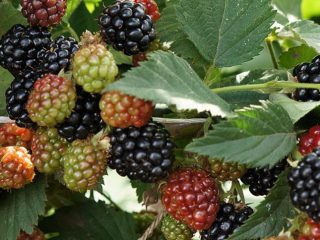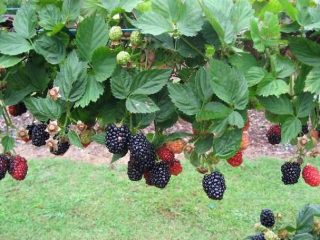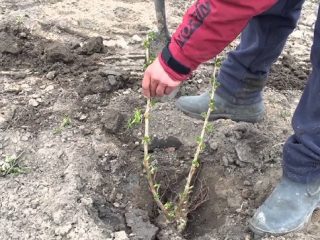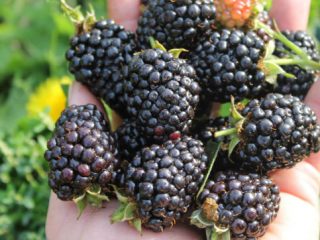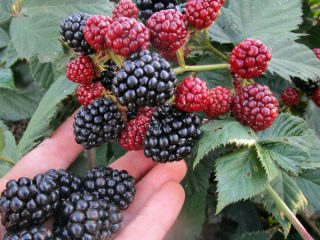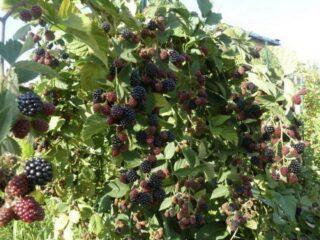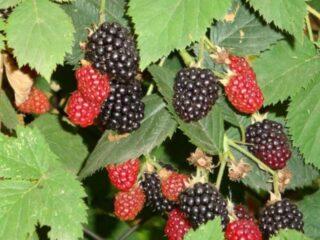Content
Gray blackberry is a wild form of the crop that has a high level of viability. The shrub grows quickly, colonizes new territory and suppresses the growth of neighboring plants. If measures are not taken to destroy it, then dense thickets will soon appear on the plot. But growing blue blackberries is not so easy, because they can regenerate from a small piece of shoot or root shoot in moist soil. Therefore, it is necessary to wage a comprehensive fight using different methods.
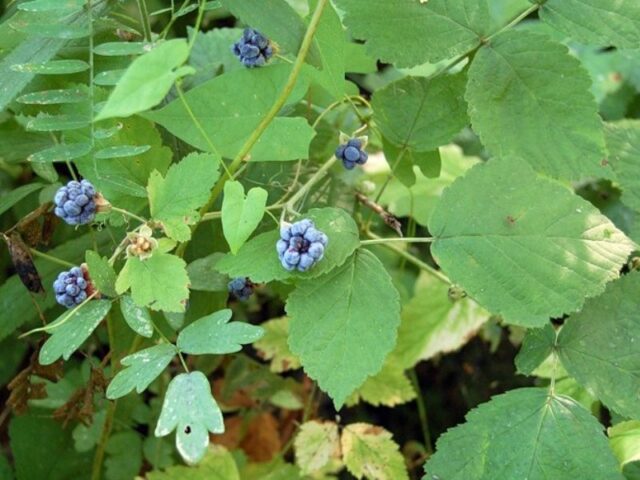
The effectiveness of the actions taken directly depends on strict adherence to all stages of the procedure.
Required Tools
Before you start clearing the area of blue blackberries, you need to prepare tools and materials that will help simplify the task.
Among them:
- pitchfork, shovel, cultivator;
- hand or brush cutter;
- pruning shears, garden scissors;
- black spunbond or high-density film;
- herbicide.
In some cases, other materials may be needed, such as tree bark, mulch, or stones.
How to grow blackberries in the garden
There are several basic ways to combat blue blackberries on your site. If there is a small amount of shoots, you can choose any of them and perform the actions sequentially. But with massive growth of shrubs, it is necessary to combine several methods to achieve the desired result.
Application of chemicals
The easiest way to remove blueberry is to use continuous herbicides. After treating the bush, the drug penetrates the leaves and spreads throughout the entire vascular system. However, given the growth power of this crop, it is able to gradually recover from the root after such spraying. To completely remove blackberries from the garden, you need to treat them with herbicides at least four times. Such preparations show maximum effectiveness when shoots grow to a height of 5-15 cm.
The most effective of them in the fight against blue blackberries:
- Roundup – 10 ml per 1 liter of water.
Roundup is effective with normal water hardness
- Tornado 500 – 75 ml per 3 liters of water.
Tornado contains an increased concentration of the active substance
- Liquidator – 80 ml per bucket of water.
The liquidator allows you to get rid of a complex of perennial plants
- Prima – 100 ml per 10 liters of water.
Prima combines two active components with different mechanisms of action
Carry out the treatment in the morning after the dew has disappeared. The first signs become noticeable after 3-4 days.They manifest themselves as chlorosis and growth arrest. And after 20 days the effect of the drug becomes maximum. By this time, the aboveground branches of the blackberry are drying out grayishly. Subsequent treatments are recommended when shoots re-grow to a height of 5-15 cm.
Backfill
This method involves filling blackberry bushes with bluegrass to suppress their growth. To do this, you need to cut off the shoots of the bush at a height of 5 cm, and then sprinkle on top with a thick layer of tree bark, mulch, and half-rotten plant debris.
To completely remove blackberries from the garden, it is also necessary to cover them after filling with material that does not allow light to pass through. In this case, roofing felt or black spunbond is suitable. And on top the material needs to be fixed with stones along the edges and the entire perimeter.
Digging
This method is effective, but time-consuming and requires a lot of effort and patience from the gardener. Therefore, it is recommended to use it with a small number of gray blackberry bushes on the site.
Procedure:
- Cover the soil at the base of the bushes with a tarp, thick film or bags.
- Cut the stems at a height of 20 cm.
- Collect them together with covering material and subsequently burn them.
- Dig up the bush on all sides at a distance of 20 cm from its base.
- Pull it out along with the clod of earth and dispose of it.
- Loosen the soil with a cultivator or pitchfork.
- Carefully remove any remaining blackberry root shoots.
- Level the soil surface.
- Cover it with thick film.
- Place a layer of mulch 10 cm thick on top.
- Loosen the cleared area several times a season.
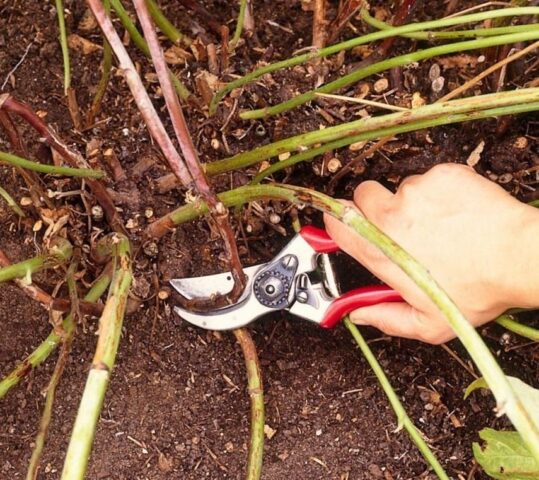
Cut shoots of bushes should not be thrown into the compost pit, as they will eventually germinate
Mowing
You can get rid of blackberries in your dacha if you mow them regularly as the branches grow.In this case, the bush does not receive enough nutritional components, gradually weakens and eventually dries out. But to achieve this result, it is necessary to mow the blackberry plantings every two weeks, from spring to late autumn. In some cases, it may be necessary to carry out the procedure several seasons in a row to completely remove the bush.
Fence installation
This method of control is effective, but labor-intensive. Its essence lies in the fact that it is necessary to install a high fence without gaps with a height of 2-2.5. In this case, the material should also be buried in the ground around the bushes to a depth of roots, which is approximately 50 cm. After installing the fence, you can proceed directly to the destruction of blackberries. To do this, it must be mowed and then covered with material that does not transmit light. At the same time, it must be laid with an overlap so that the bush does not have the opportunity to grow.
Features of breeding depending on its type
On a personal plot there can be not only a wild form of blackberry, but also its hybrid varieties. Their main difference is the large berries and moderate growth of bushes. In total, more than 40 types of garden blackberries are known, but despite this, they have similar characteristics.
If breeding a wild form of the crop may require the use of several of the methods listed above, then getting rid of hybrid blackberry species in the garden can be much easier. After all, many of them do not have a high level of frost resistance and require shelter for the winter. Therefore, regular mowing of bushes throughout the season and lack of insulation during the cold season leads to their weakening and death.
Fighting blackberries at different times of the year
You can fight blue blackberries on your site at any time of the year. AND.If during the warm period you can use all available methods, then in the fall and winter it is recommended to carry out additional measures.
To do this, after the end of the bush’s growing season, you need to trim its shoots and, using a pitchfork, slightly lift the bushes so that voids are formed between the roots. In this case, the underground part of the blackberry will not be protected, which will significantly weaken the plant.
During the winter, it is recommended to regularly clear the problem area of snow. This will leave the bush no chance of survival, since the absence of a protective layer will contribute to its freezing.
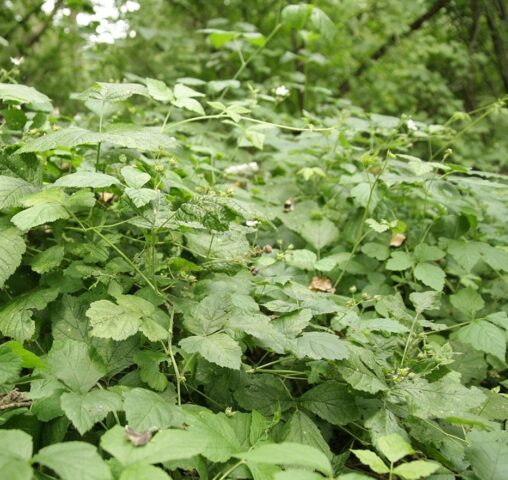
All measures to destroy blackberries must be carried out regularly
Advice from experienced gardeners
There are several tricks that make it easier to combat this shrub. Therefore, experienced gardeners recommend using them to quickly clean the area.
Tips to help you quickly get rid of gray blackberry growth:
- Wood ash, dolomite flour. The shrub prefers low-acid soil. Therefore, regular use of these components can increase the alkalinity of the soil. This leads to the fact that the plant cannot fully develop, weakens, and then freezes.
- Excessive watering. Blackberries do not tolerate prolonged stagnation of moisture in the soil. Therefore, regular abundant moistening of its plantings followed by laying a thick layer of mulch, which will prevent moisture evaporation, will lead to rotting of the root system. As a result, the bush dies.
Conclusion
Gray blackberry belongs to the category of aggressor plants.To prevent its excessive growth on the site, experienced gardeners recommend installing a fence immediately upon planting, digging it to the depth of the roots of the bush. This will subsequently greatly simplify the task of clearing the area of this bush.




